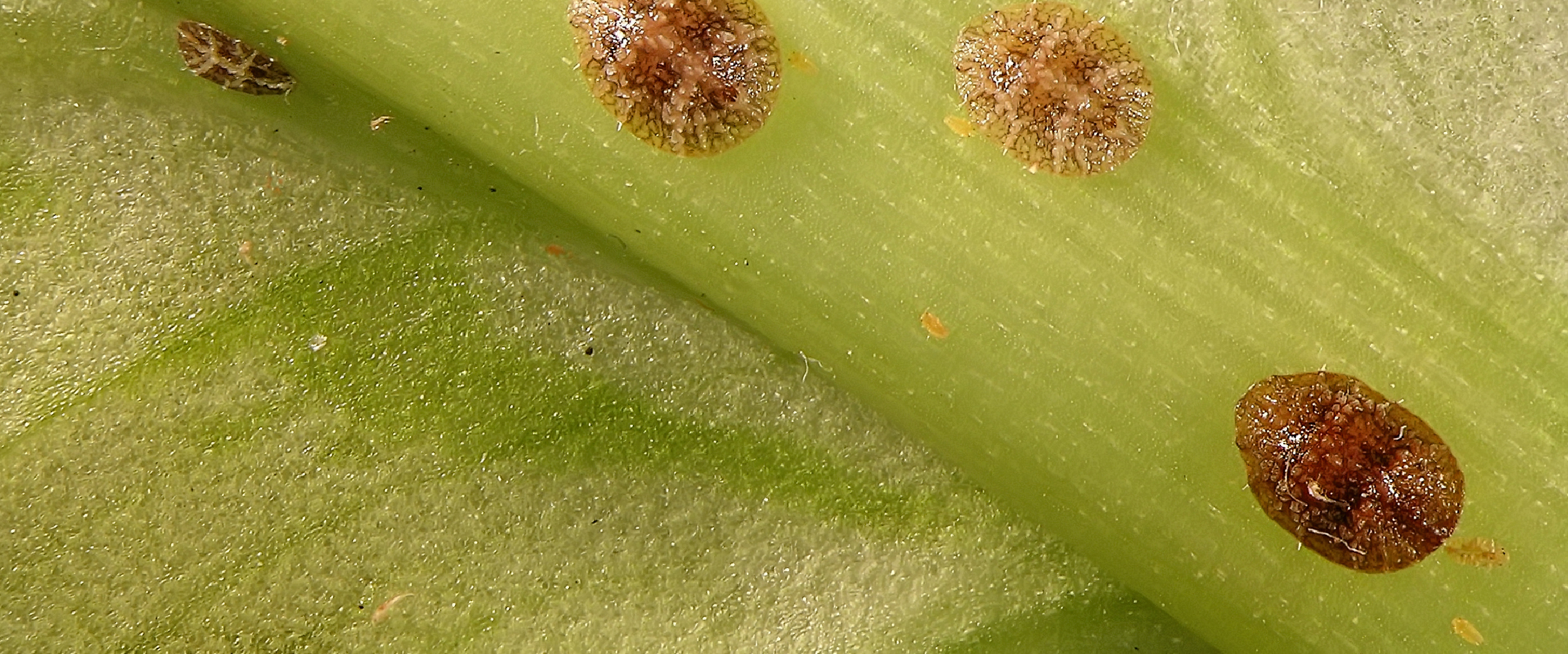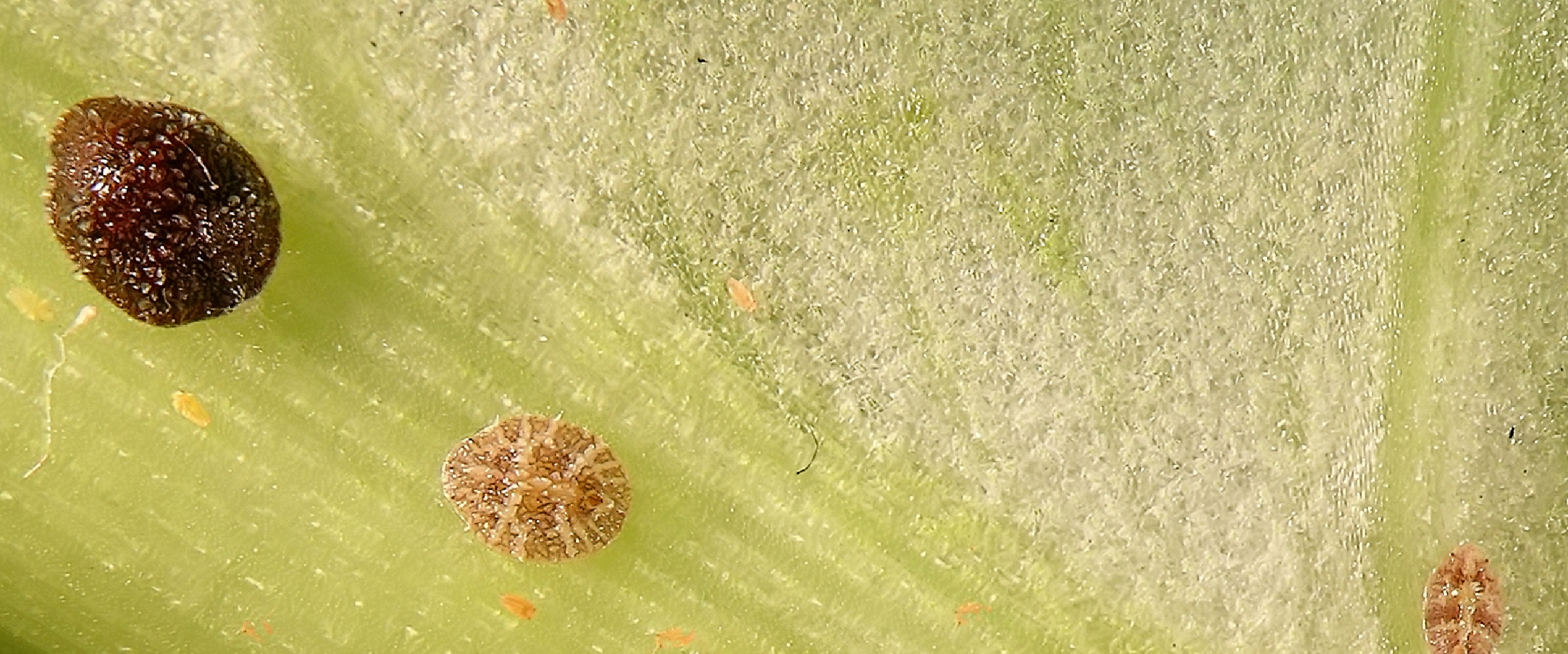The black scale (Saissetia oleae) is an important pest of citrus and olive trees. The oval, almost flat body of the female is 3.0-6.0 mm long and its shield is dark-brown to black in color, hence the name. A recognizable trait is the two transverse crests and one median ridge, which together form the letter H. The black scale reproduces by parthenogenesis. The eggs are protected under the shield until they emerge. The crawlers settle mostly along the main veins on the lower sides of leaves, young nymphs will later migrate to twigs and branches and remain there for the rest of their lives.
Damage
Black scales are very small and difficult to detect. Their secretion of honeydew will attract ants which can be a valuable indication to their presence.
Black scales feed by sucking the sap from the plant tissue. While feeding, they secrete honeydew as a waste product, which is a substrate for a group of fungi, sooty mold. Sooty mold is black in color and coats the leaves and fruit. The sooty mold covers the leaves, thus reducing the plant’s photosynthetic capabilities and may stain the fruit decreasing their market value as well as causing a delay in fruit color development. Saissetia oleae is a phytosanitary pest in some export markets and if found on fruit destined for these markets, can result in rejection of the consignment and could place these markets at risk for the future.
There are specific natural enemies for different species of scale insects.
For more information contact your local BioBee field agent.









